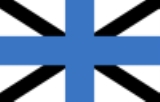
Coastal batteries of Estonia
Encyclopedia
The coastal batteries presented itself as a powerful strike force of Estonian Navy
between 1918 and 1940.
in 1721. Tallinn having been historically an important trading center between the East and the West became one of the main naval bases of the Imperial Russian
Baltic fleet
.A systematic coastal defence network and naval gun installations were ordered and the construction works began at the end of the 1890s.
units in October 1917 after the Germans
had landed on the islands. During the Estonian War of Independence and after the Treaty of Tartu
the Estonia Navy began to rebuild and develop the coastal defence network. During the period of independence from 1918 to 1940 Estonia
invested millions of kroons
into the renovation and development of the coastal defence. By 1939 the coastal batteries presented a considerable naval force and were considered among the Navy
elite forces.
Estonian Navy
The Merevägi is the navy of Republic of Estonia and is part of the unified Kaitsevägi .In total, there are about four commissioned ships in the Estonian Navy, including three auxiliary ships; the displacement of the navy is under 10,000 tonnes making it one of the smallest navies in the world...
between 1918 and 1940.
History
Since the end of the 19th century the Russian Empire began to build coastal fortresses and naval strongholds to Estonia which was annexed to empire after the Great Northern WarGreat Northern War
The Great Northern War was a conflict in which a coalition led by the Tsardom of Russia successfully contested the supremacy of the Swedish Empire in northern Central Europe and Eastern Europe. The initial leaders of the anti-Swedish alliance were Peter I the Great of Russia, Frederick IV of...
in 1721. Tallinn having been historically an important trading center between the East and the West became one of the main naval bases of the Imperial Russian
Russian Empire
The Russian Empire was a state that existed from 1721 until the Russian Revolution of 1917. It was the successor to the Tsardom of Russia and the predecessor of the Soviet Union...
Baltic fleet
Baltic Fleet
The Twice Red Banner Baltic Fleet - is the Russian Navy's presence in the Baltic Sea. In previous historical periods, it has been part of the navy of Imperial Russia and later the Soviet Union. The Fleet gained the 'Twice Red Banner' appellation during the Soviet period, indicating two awards of...
.A systematic coastal defence network and naval gun installations were ordered and the construction works began at the end of the 1890s.
During the Republic of Estonia
Most of the coastal fortifications and fortresses were blown up by the retreating RussiansRussians
The Russian people are an East Slavic ethnic group native to Russia, speaking the Russian language and primarily living in Russia and neighboring countries....
units in October 1917 after the Germans
Germans
The Germans are a Germanic ethnic group native to Central Europe. The English term Germans has referred to the German-speaking population of the Holy Roman Empire since the Late Middle Ages....
had landed on the islands. During the Estonian War of Independence and after the Treaty of Tartu
Treaty of Tartu (Russian–Estonian)
Tartu Peace Treaty or Treaty of Tartu was a peace treaty between Estonia and Russian SFSR signed on February 2, 1920 ending the Estonian War of Independence. The terms of the treaty stated that "Russia unreservedly recognises" the independence of Republic of Estonia de jure and renounced in...
the Estonia Navy began to rebuild and develop the coastal defence network. During the period of independence from 1918 to 1940 Estonia
Estonia
Estonia , officially the Republic of Estonia , is a state in the Baltic region of Northern Europe. It is bordered to the north by the Gulf of Finland, to the west by the Baltic Sea, to the south by Latvia , and to the east by Lake Peipsi and the Russian Federation . Across the Baltic Sea lies...
invested millions of kroons
Estonian kroon
In 1992, coins were introduced in denominations of 5, 10, 20 & 50 senti, as well as 1 kroon. The 1 kroon was struck in cupronickel, the others in aluminum-bronze. However, in 1997, nickel-plated steel 20 senti were introduced, followed by aluminum-bronze 1 kroon in 1998. 5 senti coins were not...
into the renovation and development of the coastal defence. By 1939 the coastal batteries presented a considerable naval force and were considered among the Navy
Estonian Navy
The Merevägi is the navy of Republic of Estonia and is part of the unified Kaitsevägi .In total, there are about four commissioned ships in the Estonian Navy, including three auxiliary ships; the displacement of the navy is under 10,000 tonnes making it one of the smallest navies in the world...
elite forces.

